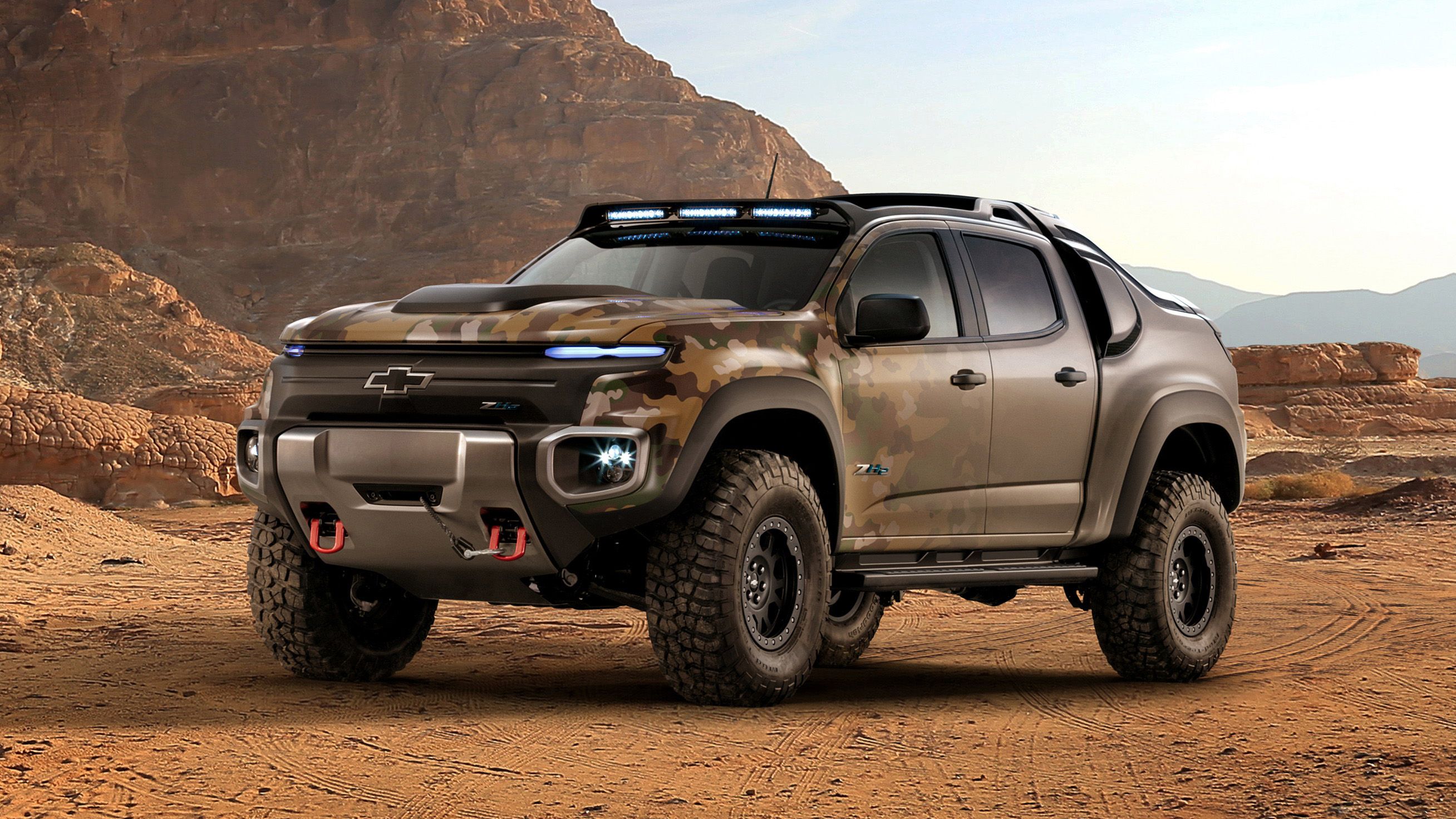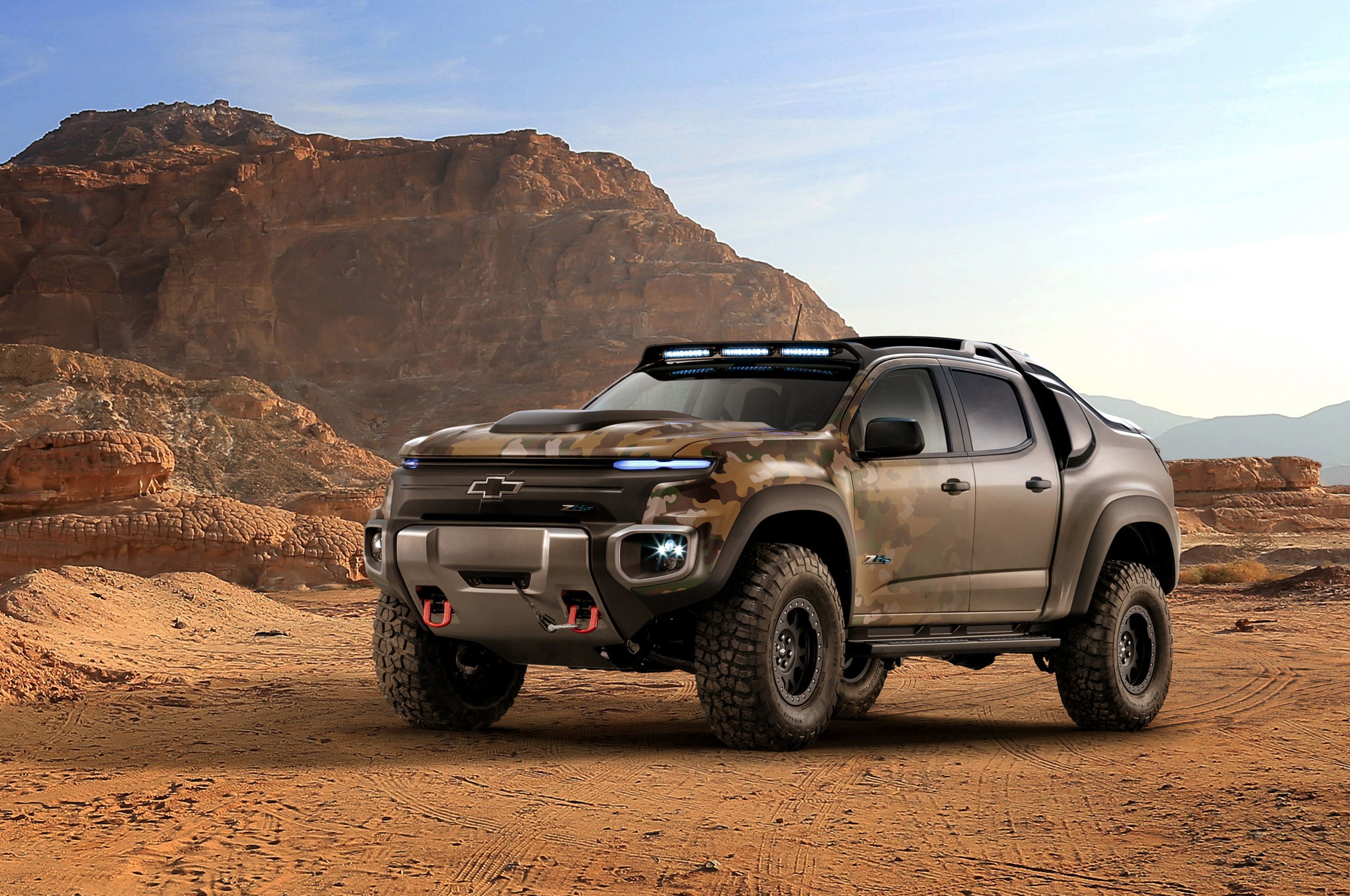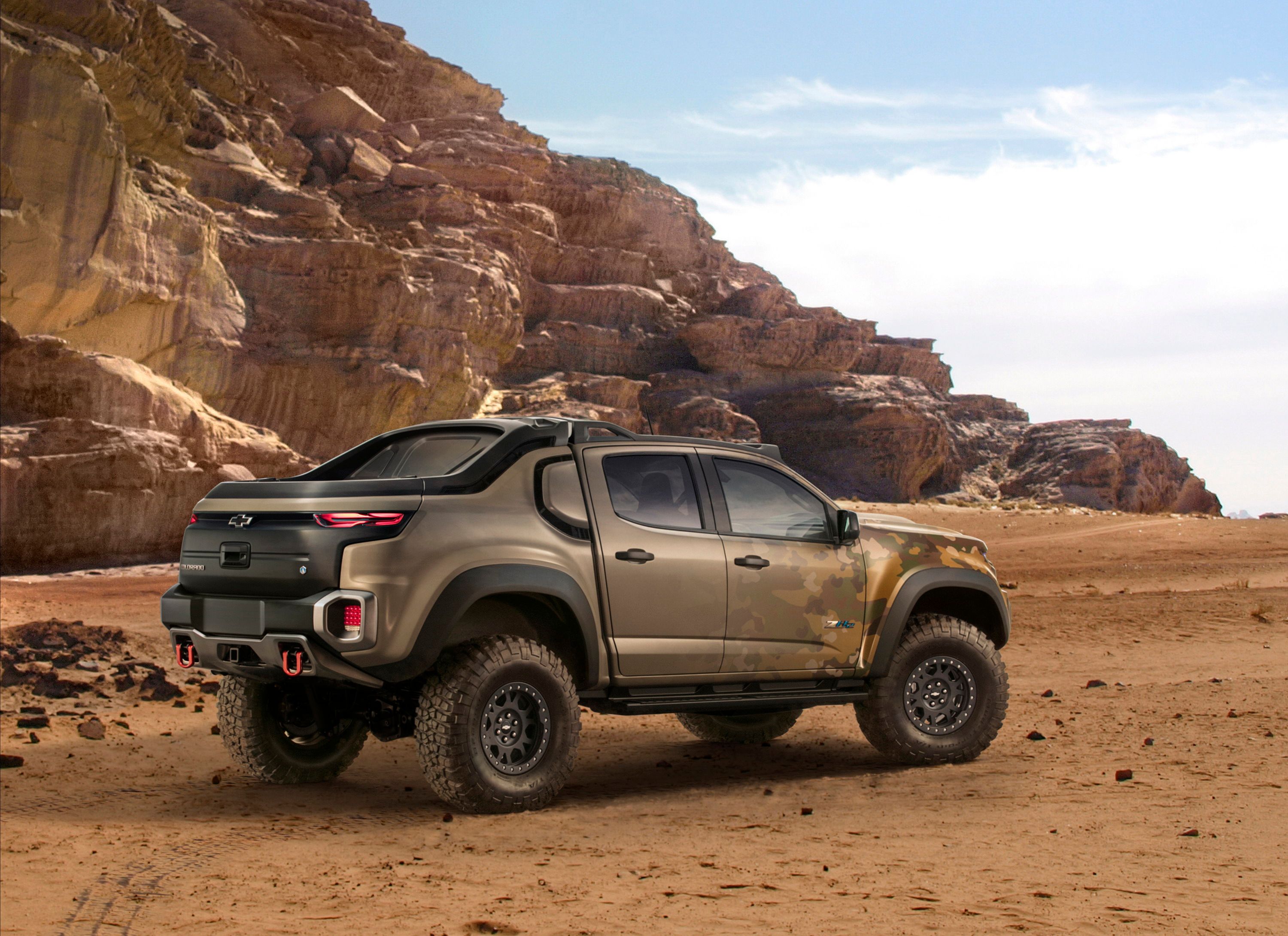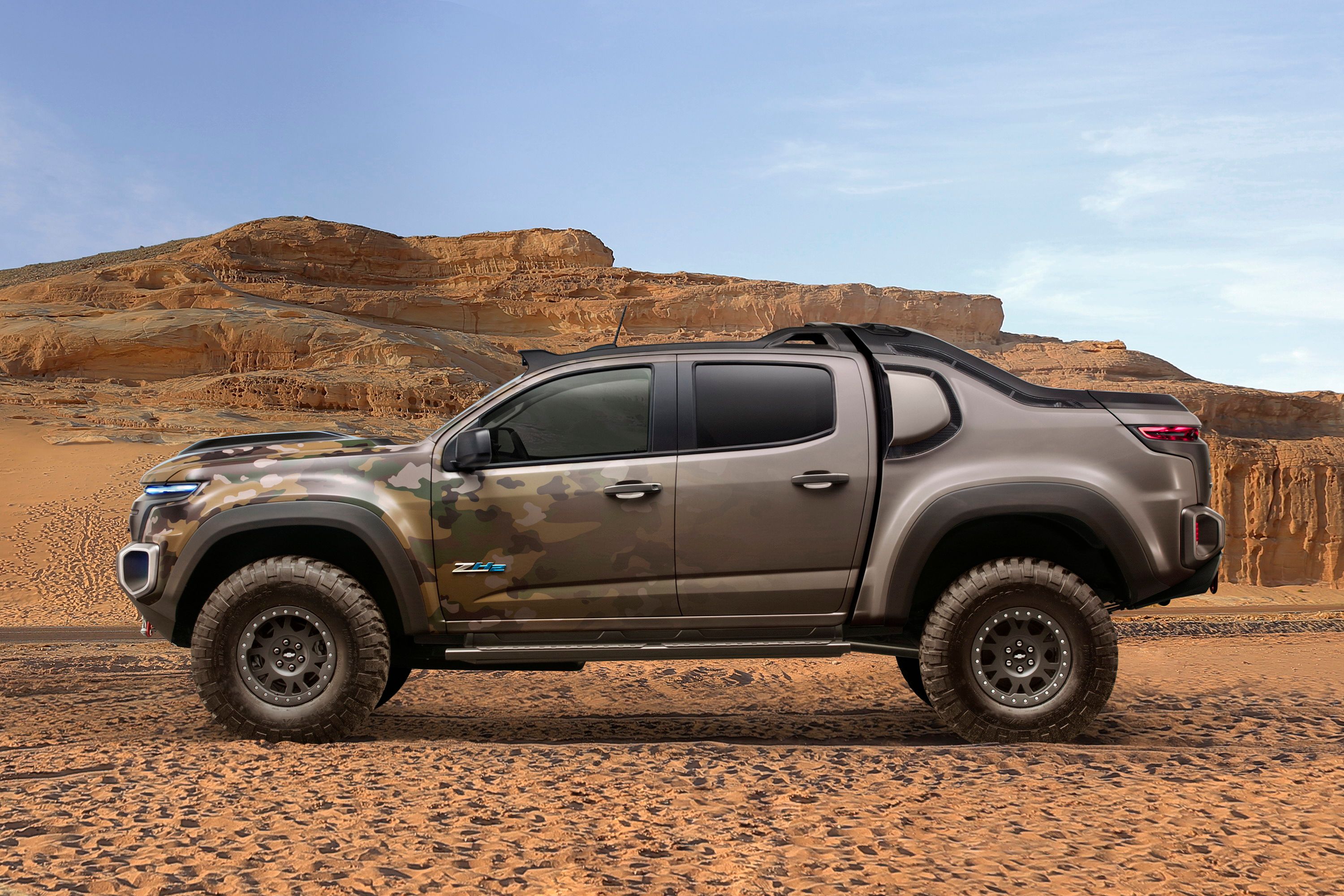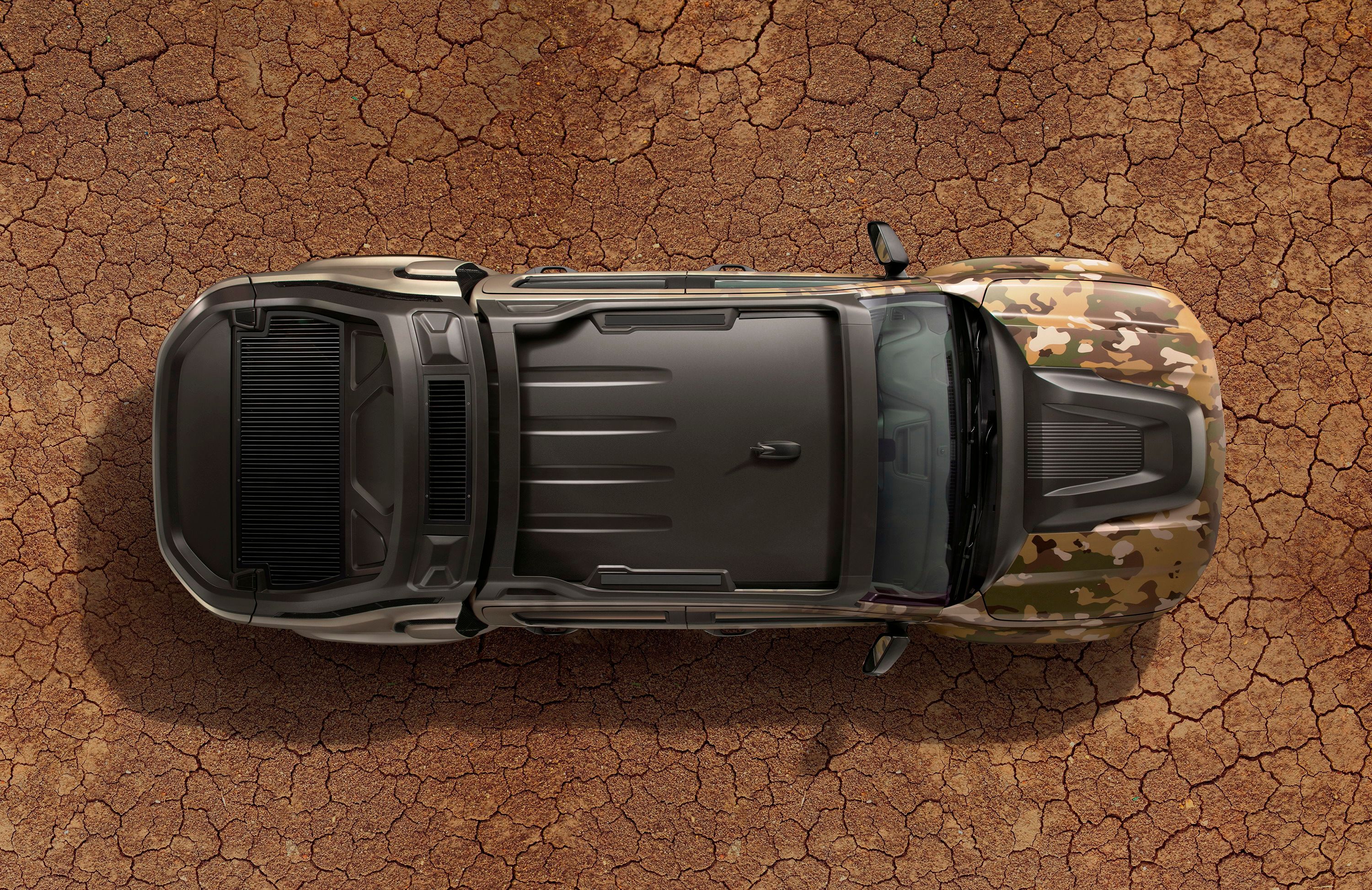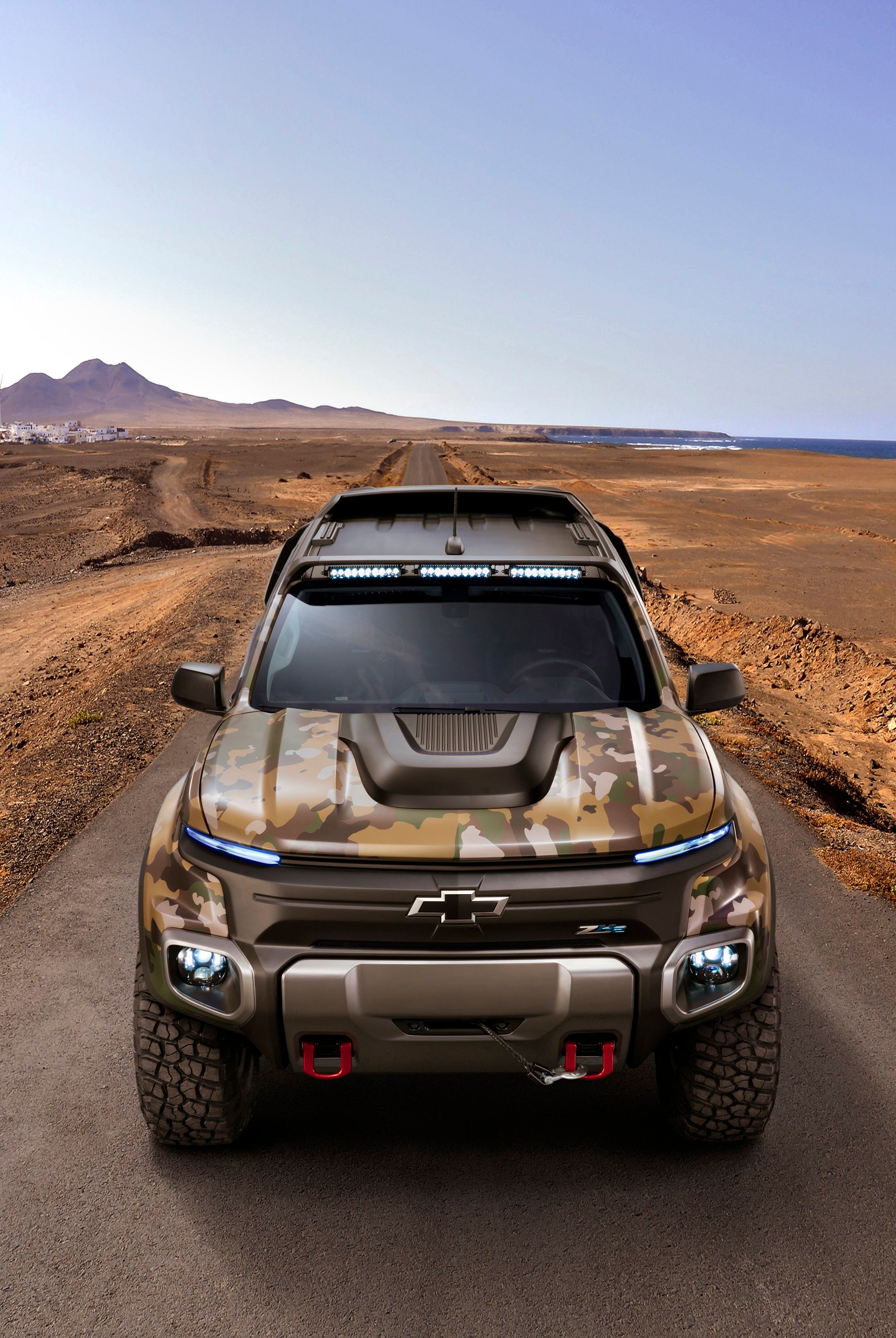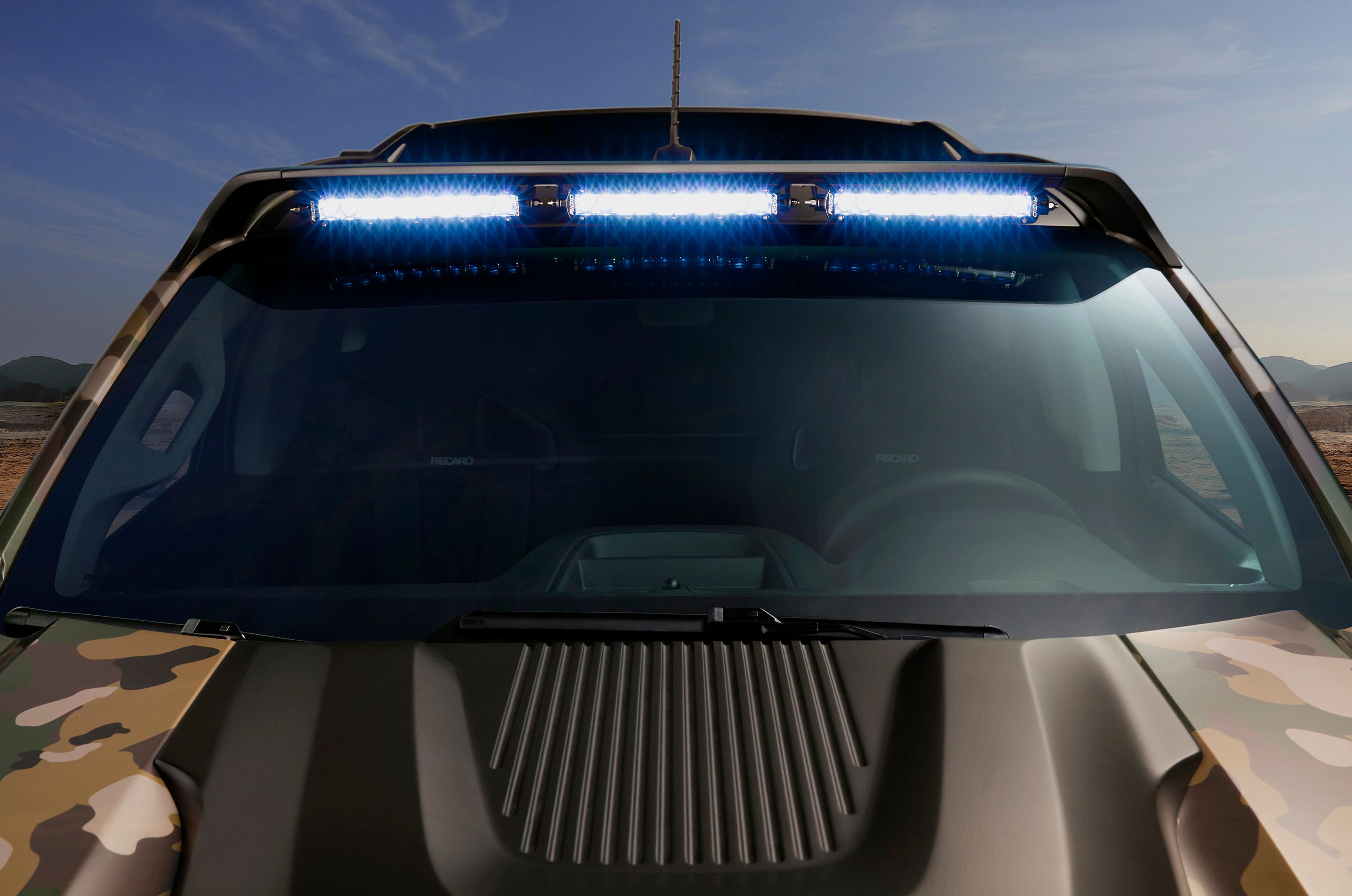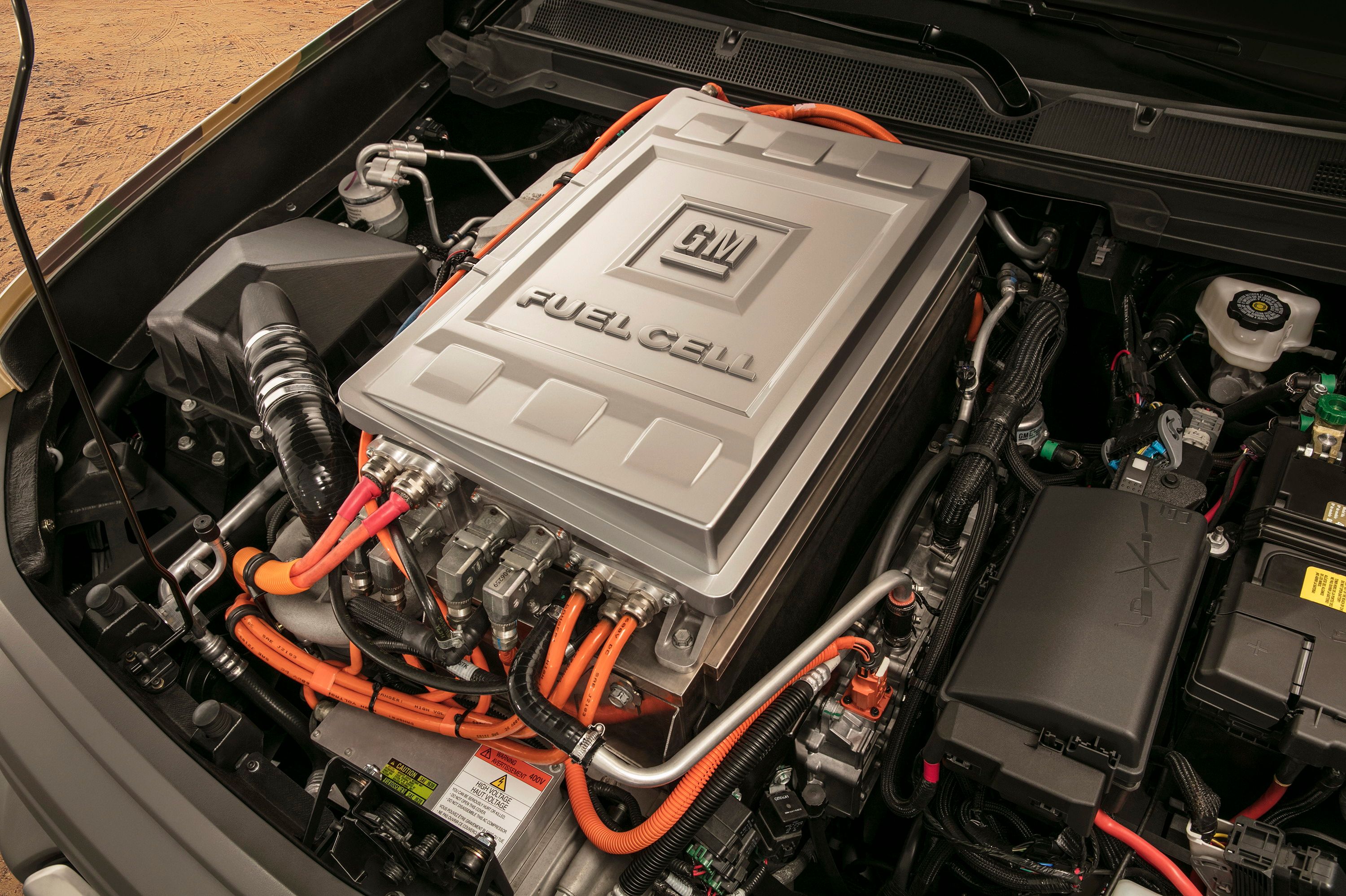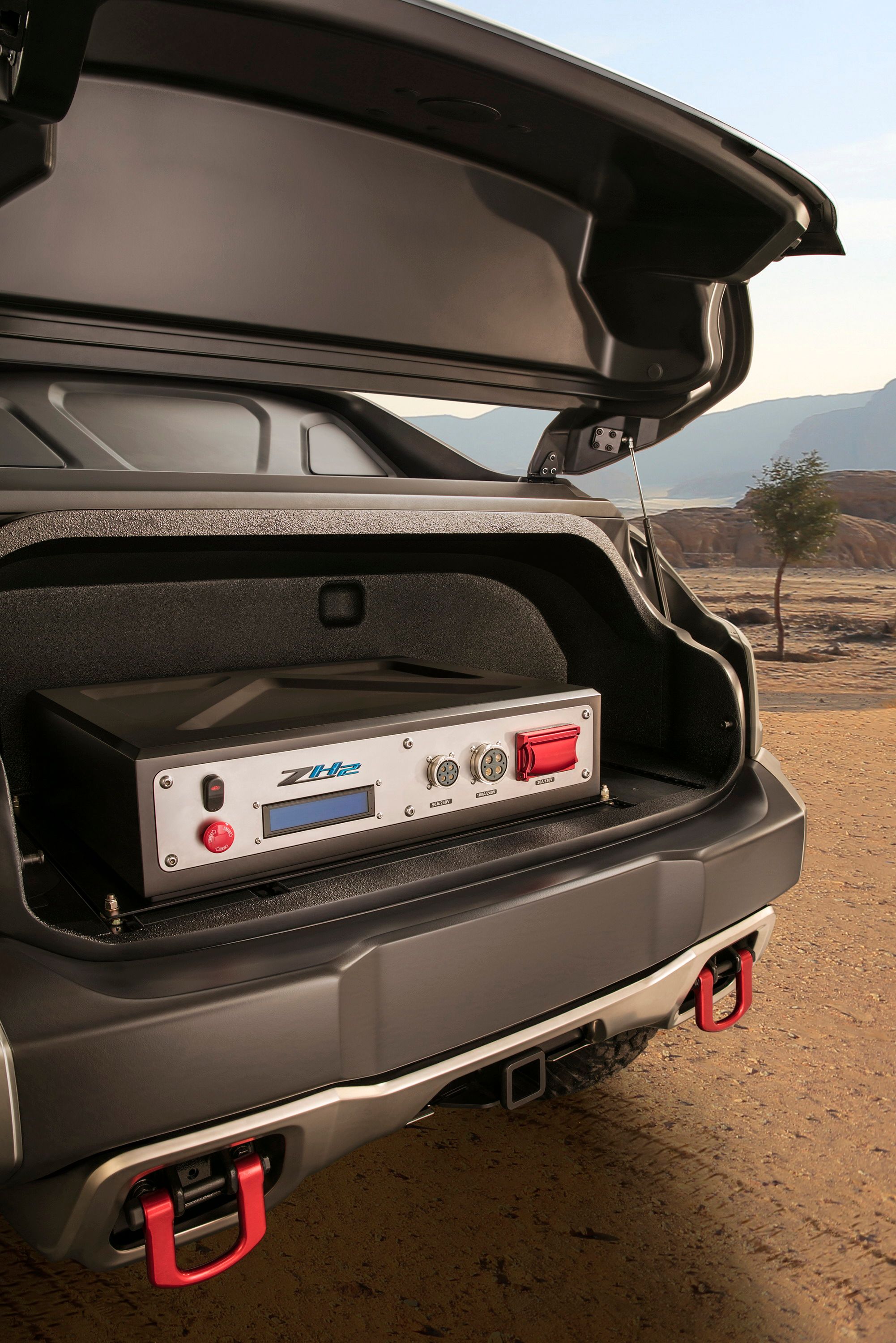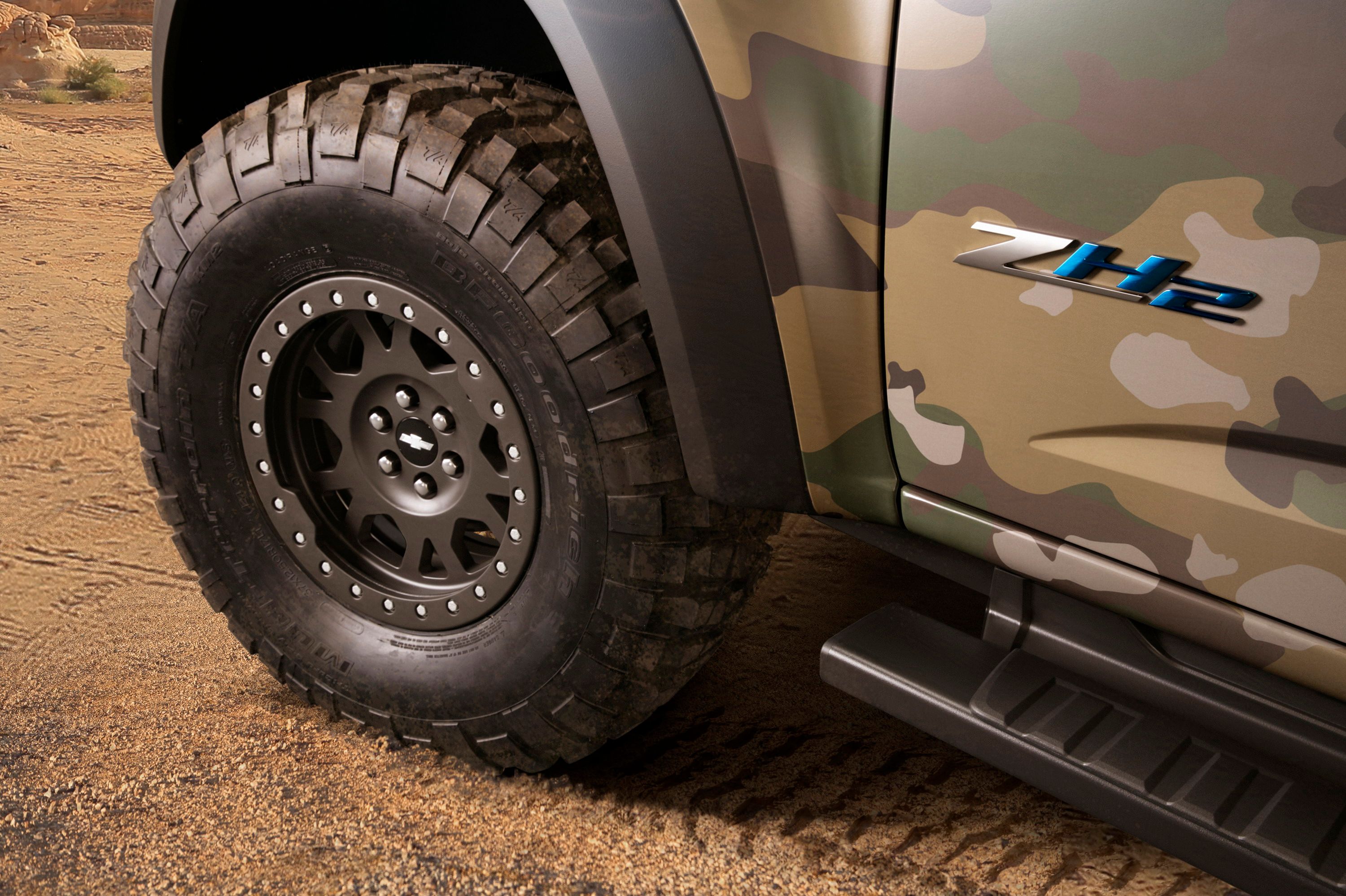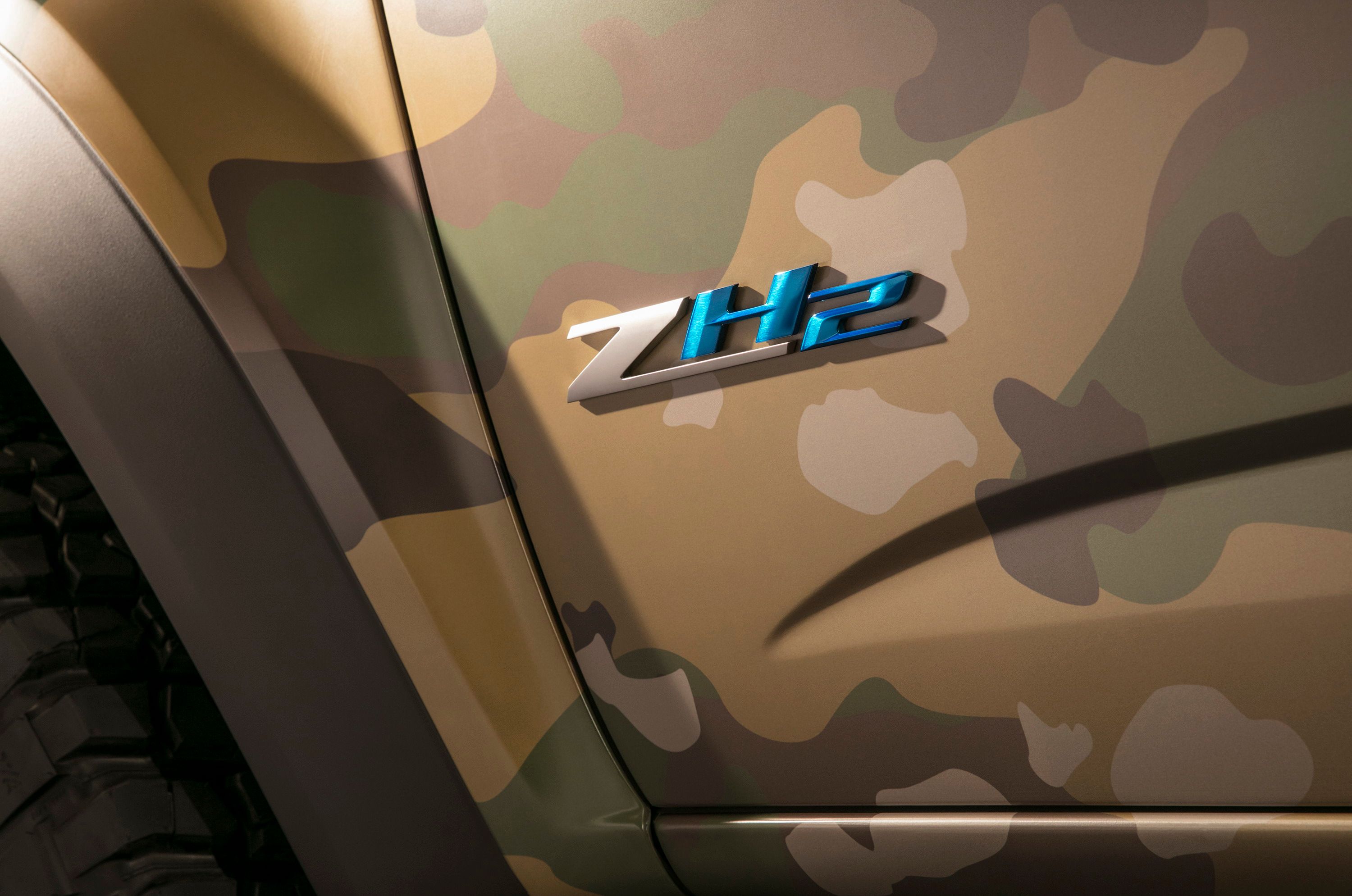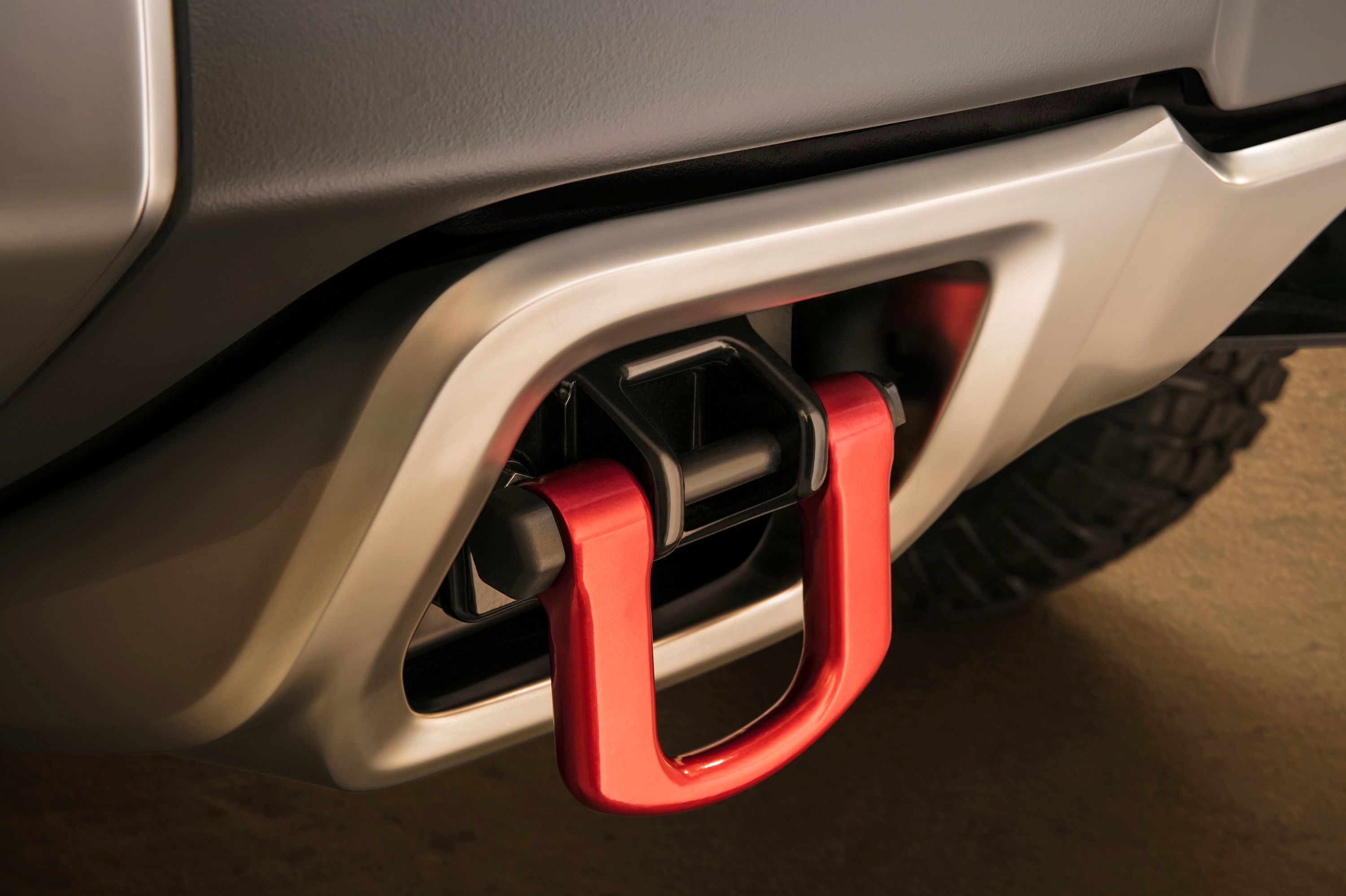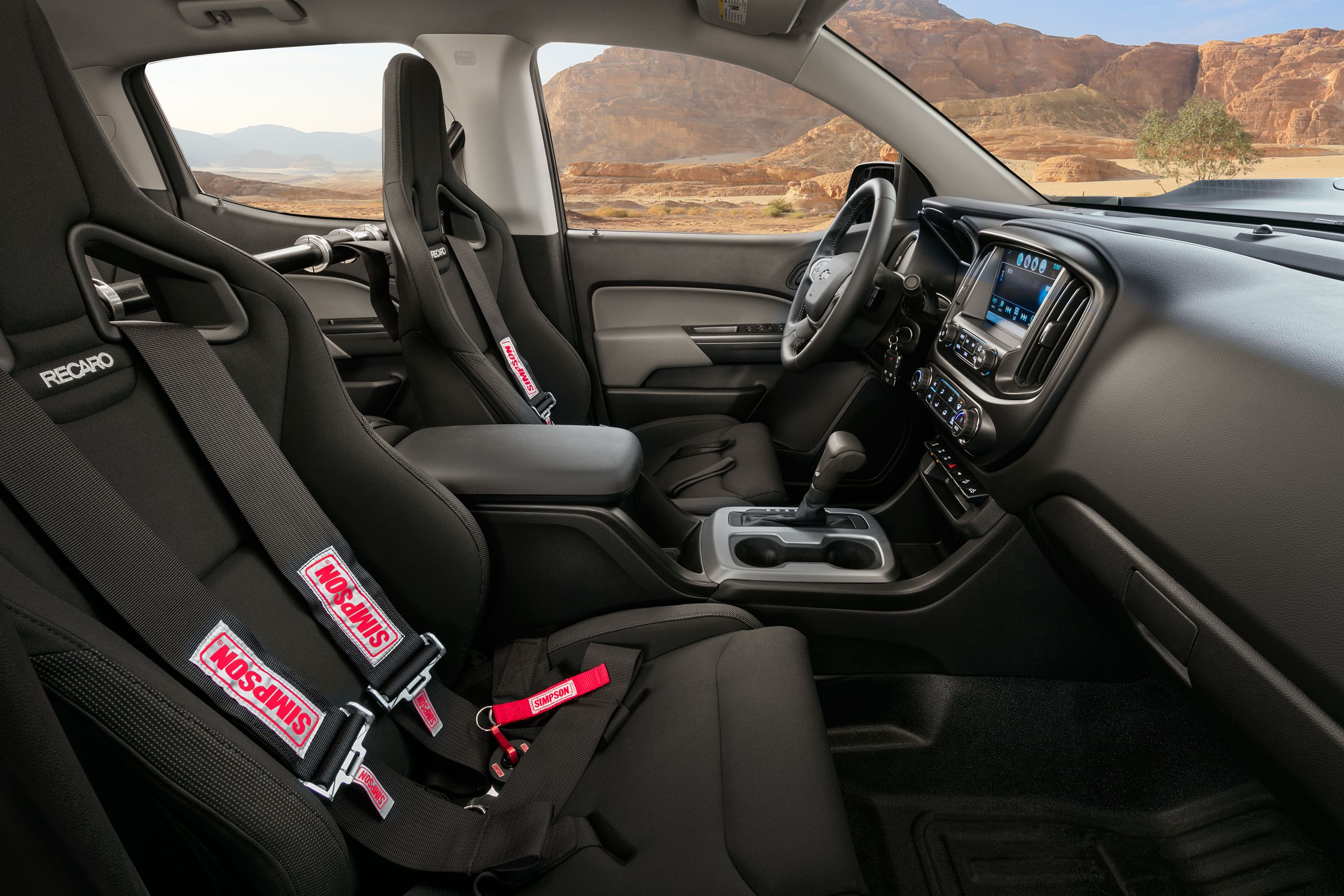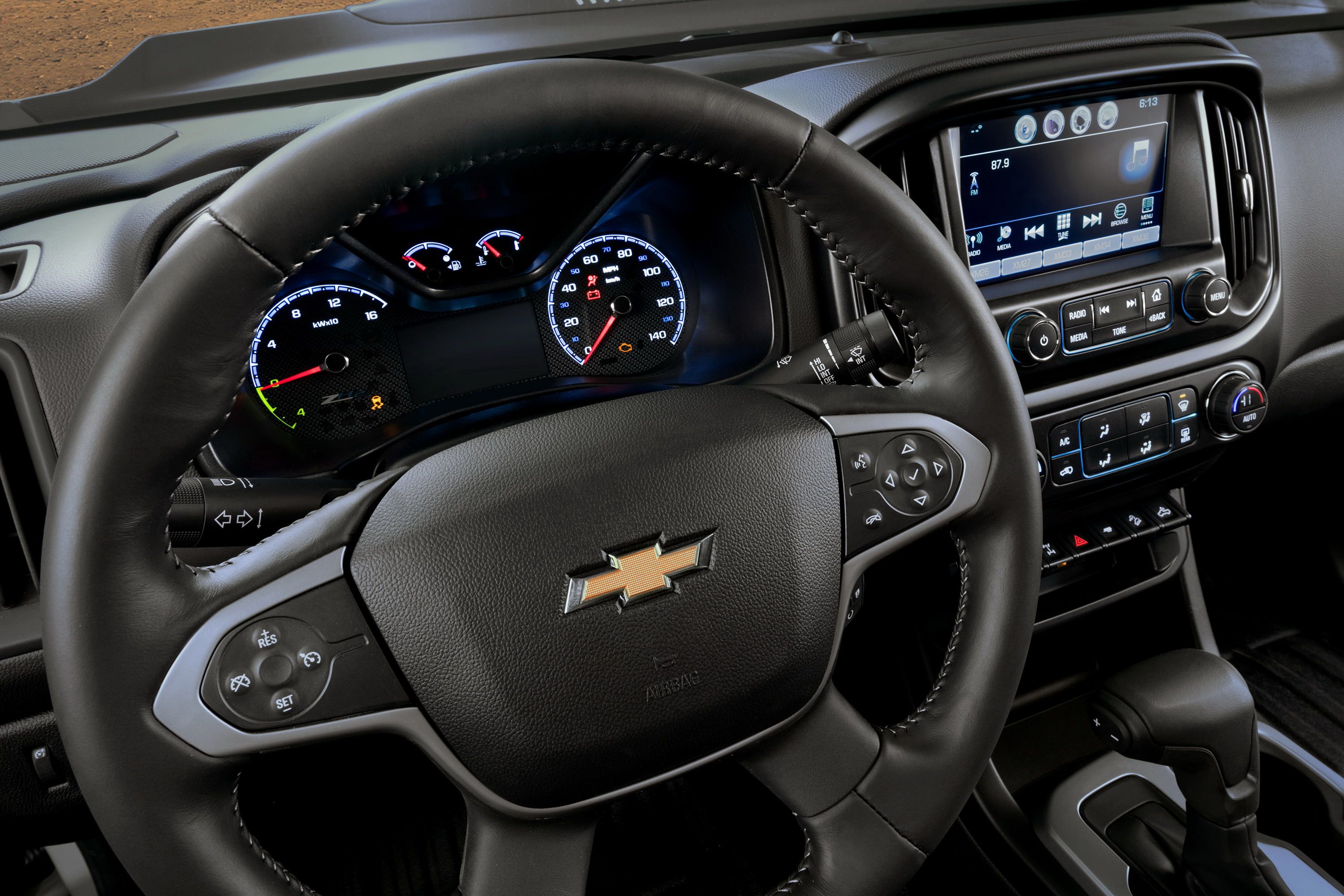Nearly a month ago, we told you about General Motors’ partnership with the U.S. Military’s Army Tank Automotive Research, Development, and Engineering Center to build and test a fuel cell vehicle for use in military operations. Well, GM has debuted its hydrogen-powered pickup and it’s called the Colorado ZH2.
As you can imagine, the truck is based on the Chevrolet Colorado. The ZH2 nomenclature is a play off the Colorado’s (or more historically, the S-10’s) off-road package, the ZR2. With its R swapped for an H, this hydrogen-powered truck is designed to test the capabilities and limits of a fuel-cell vehicle in off-road, wartime-style environments.
“Fuel cells have the potential to expand the capabilities of Army vehicles significantly through quiet operation, exportable power and solid torque performance, all advances that drove us to investigate this technology further,” said Paul Rogers, director of TARDEC. “Fuel cells have the potential to expand the capabilities of Army vehicles significantly through quiet operation, exportable power and solid torque performance, all advances that drove us to investigate this technology further.”
The speed Rogers is referring to is the time TARDEC gave GM to come up with this truck. From contract to concept, the project has happened in less than a year. That’s nearly light speed when it comes to government operations. From this point, the Colorado ZH2 will undergo a year’s worth of evaluation and demanding rigors to determine if hydrogen fuel cell vehicles have a future on the battlefield.
So what’s the big deal about fuel cell technology, you might ask? This propulsion system is nearly silent in operation, it offers a reduced thermal signature, has high torque thanks to its electric drive, offers low fuel consumption, and even creates water, which can be utilized in the field by soldiers.
There’s plenty to talk about here, so keep reading for the full run-down.
Continue reading for the full review.
2016 Chevrolet Colorado ZH2
- Make: Array
- Model: 2016 Chevrolet Colorado ZH2
- [do not use] Vehicle Model: Array
Exterior
Somebody has been playing too much Call of Duty, it seems. The Colorado ZH2 concept has a distinctly futuristic demeanor about it, yet recalling the Warthog vehicle found in the video game. The center cab section is clearly borrowed from the Colorado pickup, but nearly every other aspect has been heavily reworked to be more macho.
Up front, the grille and headlight assemblies carry a similar feel to the production Colorado, though narrow slats and squinty headlights are not found on your uncle’s Chevy. The hood features a huge “power bulge” that helps house the fuel cell powertrain. The bumper sports some LED lighting elements, as well as a recovery winch and D-ring shackles apparently borrowed from the extinct Hummer H3.
The tall ground clearance is apparent from this angle as well, with way more room underneath than a stock Colorado. That’s thanks to a heavily modified suspension system and the massive 37-inch BFGoodrich Mud Terrain T/A KM2 tires. The suspension runs the normal independent wishbone front and solid rear axle and leaf spring suspension out back. This gives the truck nimble handling yet impressive cargo capacity.
Running boards under the doors help gear-laden soldiers step into the truck, while also protecting the body from off-road debris. Up top, an integrated light bar holds three LED light pods. The bar is connected to a unique, roof-mounted rack that flows onto the one-off rear bed area. There’s a small storage shelf just aft of the sail panels that allows for bulky or dirty items.
Under that shelf, what’s left of the cargo bed is home to a power converter that gives soldiers the ability to run mobile equipment in the field without the need of a separate power generator. That storage space is accessed via a trunk-like opening that keeps the area sealed when closed. The rear bumper also features those red-painted D-ring recovery points and a standard two-inch receiver hitch.
Interior
Inside, Chevy designers didn’t go as drastic as the outside. The same dashboard remains, as do the door panels and center console. Nevertheless, there are changes. The front seats are swapped out for Recaro racing seats with Simpson harnesses connected to a B-pillar-mounted bar, full-coverage floor mats keep mud at bay, and several updates to the gauge cluster and toggle switches match the ZH2’s purpose.
The gauge cluster now show KW output, multiplied by 10. It shows the system can generate anywhere between four kW to expelling 160 kW in operation. New graphic styles match the new ZH2 logo and blue color hue.
The toggle switches tell an equally interesting story. Now present are two switches that appear to independently operate front and rear locking differentials. This, along with the two-speed, electronically controlled transfer case, gives the Colorado ZH2 the ability to traverse just about anywhere. The cubbyhole below the toggle switches is also larger than the production Colorado’s. The space is normally less wide to accommodate buttons for the heated and cooled seats.
Beyond these visible changes, the Colorado ZH2’s interior seems mostly stock.
Drivetrain
Details regarding the ZH2’s hydrogen fuel cell powertrain are rather limited. That’s likely for security purposes. We do know the ZH2 features what Chevy calls an Exportable Power Take-Off unit, or EPTO, that allows the fuel cell system to power activity away from the vehicle. This includes locations where other power sources are impossible to come by, or where it’s not feasible or tactically advantageous to bring in a huge engine-powered generator.
The major advantages to fuel cell power in military applications include its nearly silent operation and low thermal heat signature. This keeps troops from being easily spotted by enemy FLIR systems and heard at a distance. The torque produced by the truck’s electric motor (or motors) gives it instant torque, allowing for impressive acceleration and off-road climbing abilities. A fuel cell system also produces no harmful byproducts or smoke, giving troops another tactical advantage. The one byproduct a fuel cell does produce is extremely handy to have – water.
We do know GM will be testing the Colorado ZH2 concept vehicle at its Milford Proving Grounds into the early months of 2017 before shipping the truck to the Army. Conveniently enough, GM and TARDEC have development labs located only 20 miles apart in southeast Michigan, allowing for easy collaboration on the project. Once in Army hands, the truck and its fuel cell powertrain will be brutally evaluated for its ruggedness, reliability, and functionality.
Other GM Fuel Cell Projects
General Motors isn’t new in the fuel cell game. In fact, the Colorado ZH2 is GM’s second vehicle development with the U.S. Military just this year. Back in June, GM announced a partnership with the Navy to produce a fuel cell-powered Unmanned Undersea Vehicle that is currently being evaluated in a pool. Once that regiment of testing is complete, the Navy will begin sea trials and eventual deployment. Interestingly enough, the UUV’s fuel cell shares much of its design and componentry with the Colorado ZH2 pickup’s fuel cell.
Beyond the military, GM has been testing fuel cells with its Project Driveway campaign. A fleet of 119 fuel cell-powered Equinox crossovers has been driven by more than 5,000 people in a multi-year trial that’s accumulated more than 3.1 million miles.
Prices
There’s no word on what the Colorado ZH2 costs, but considering it’s a joint project with the U.S. Military, we’d expect the running total to be somewhere in the millions. Of course, early examples of anything always cost more than the finalized product that winds up on shelves, so if GM does get a contract to build fuel cell vehicles for the military, expect each unit to cost significantly less.
Conclusion
General Motors might not be the first name people think about when it comes to alternative fuels, but GM’s fuel cell projects have realized tons of real-world results its engineers can evaluate. Between powering a fleet of ho-hum last-generation Equinox crossovers to propelling unmanned submarine vehicles and 4WD Army trucks, GM is seemingly doing it all. It will certainly be interesting to see what comes of these projects.
Granted, other automakers are seemingly far ahead of GM in getting hydrogen fuel cell technology into the hands of consumers. Toyota, for example, already has the Mira. It’s a dedicated vehicle designed from the start to be a fuel cell vehicle. It offers an impressive range and performance, while being competitively affordable in the marketplace.
Fuel cell technology could very well become the means of propulsion for mass-production vehicles. But before that time comes, automakers like Toyota and General Motors have plenty of research and development to do.

